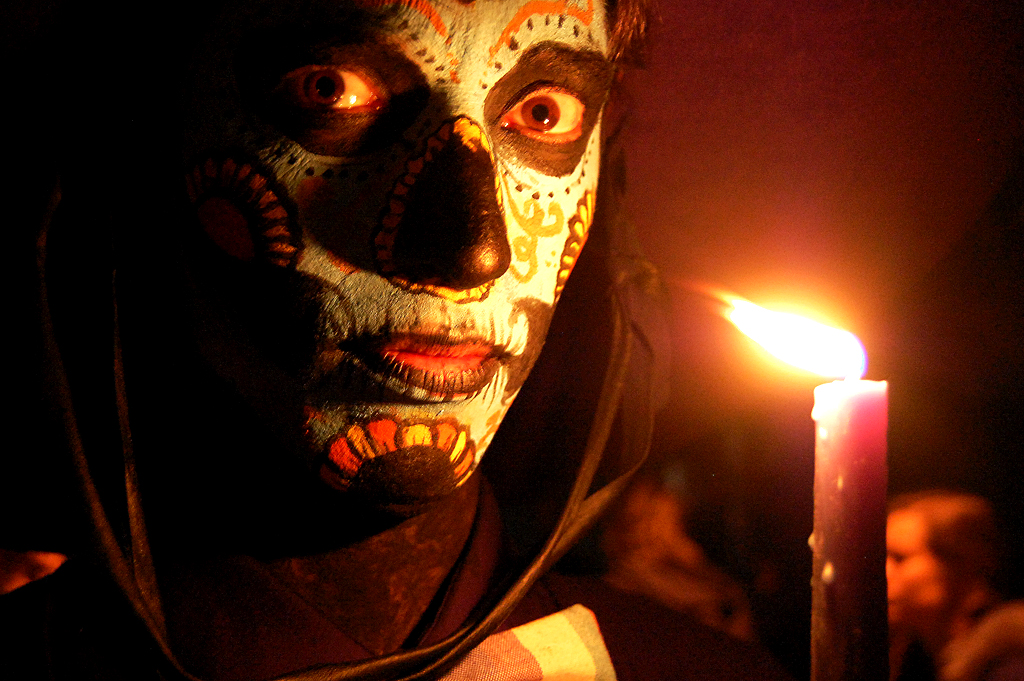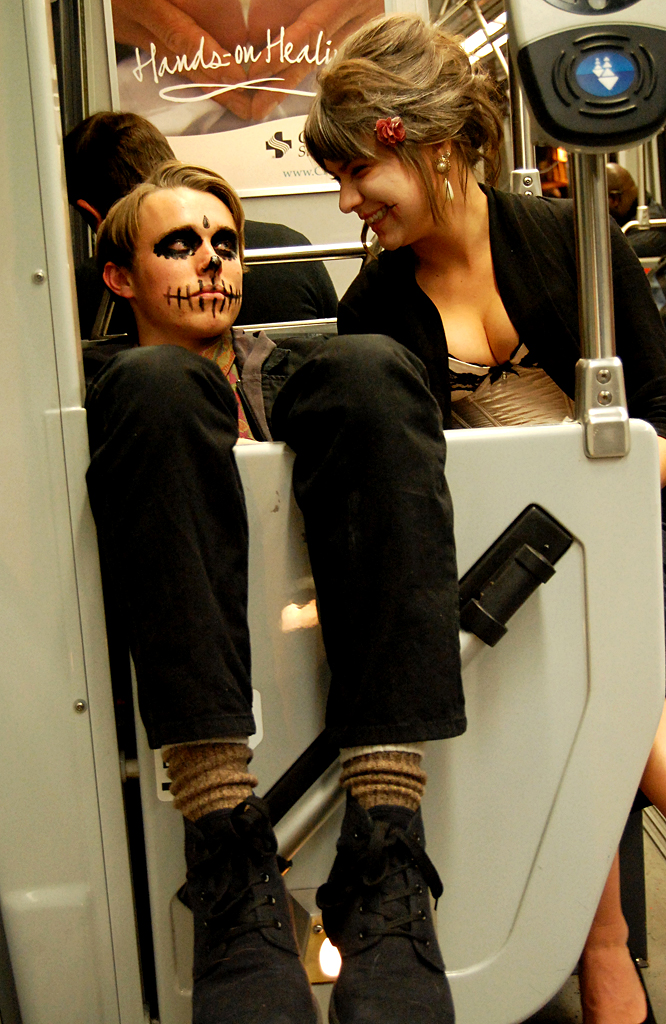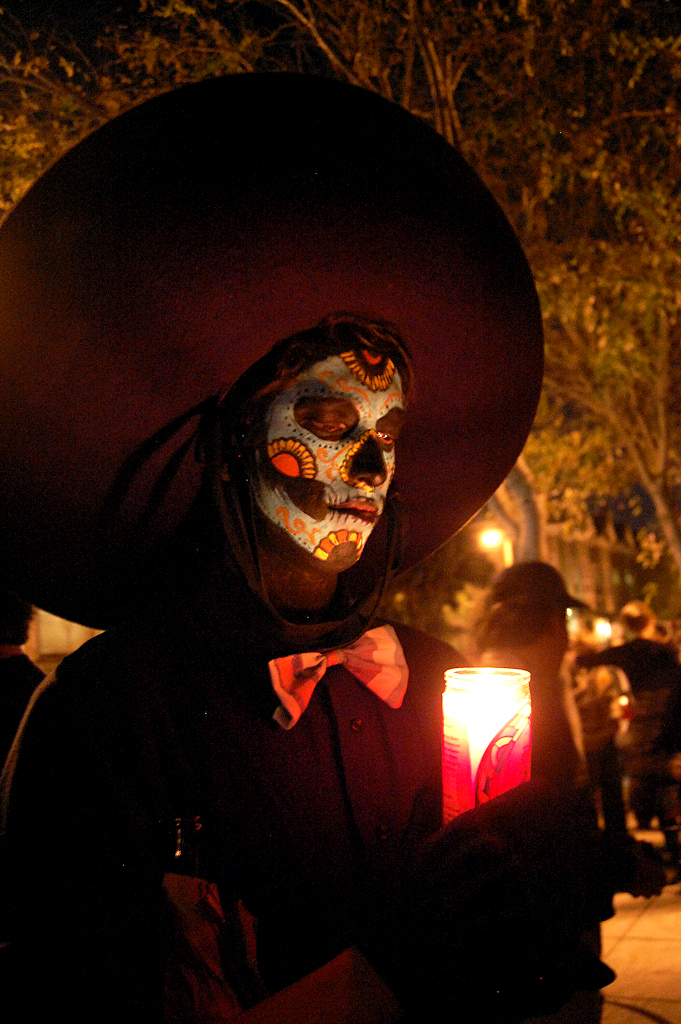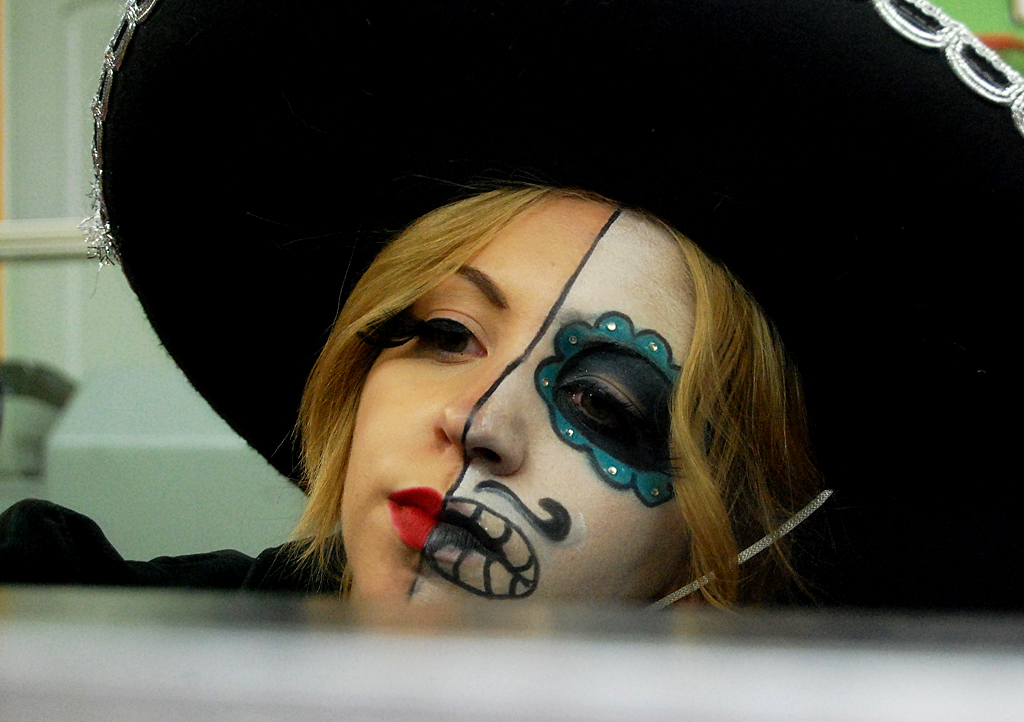By Victor Rodriguez
Photos by Cindy Waters
Amid the penetrating smells of the burning incense, the parade is underway with dancers in their positions, percussionists at the ready, and participants each holding one figure of the Aztec calendar. People line up on the sidewalks and curbs to watch the neighborhood pilgrimage. A morbid view is not uncommon, and many people, both adults and children, wear the traditional black-and-white face paint of a human skull to recall the better days they had with their dead.
The black lines on her face indicate careful time management in preparing for the event. A spider web on her forehead, thin and wavy lines on her cheeks that begin with plastic blue diamonds, and the skull’s teeth formed to make more of a frown than a smile. They portray her with a melancholic expression on this particular day. Holding a candle very close to her chest, Rachel Lesage watches the parade with careful contemplation.
“This candle is in memory of my mother,” says Lesage, “It’s a way of channeling with her according to this day’s tradition.”

Dressed in black and carefully arranging marigolds of cloths on the bun of her hair, she has made the Mexican holiday a part of her tradition for fifteen years in remembrance of her loved ones.
Day of the Dead, a tradition crucial to the Mexican culture, dates back to Aztec times. It is a day where people pay their respects and feel a connection to the other side. Sugar skulls, marigolds, incense, and altars are common attributes to the “decoration” of this holiday, much like stockings stockings and pine trees represent Christmas. But in the Mission, the celebration does not limit itself to the Mexican population, it reaches a good amount of the diverse culture in San Francisco.

“Here, I have my dad, and on the other side is my first boyfriend,” says Pedro Valverde, describing the candle he made to display the pictures of two important people in his life. According to Valverde, such a major celebration in the city is important to uphold the tradition he started being a part of in Texas.

Glass candles, the ones common in the religious community, are custom made by the people who recall those most important in their lives. The light signifies a welcome to the spirit of the deceased, and a recollection of better moments spent with them. The wrapping around it can be colorful and intricate, but most of the light up a picture of those departed.

Valverde looks up at the parade as it begins on 22nd and Bryant, holding his father’s rosary with one hand, and says, “This is a way that I can have soul access with him on a day like this.”

Yet, the parade does not call for a very silent and tearful march, as one might initially believe since it is a day of mourning. The parade is a form of ritual for the crowd to experience a joyous emotional connection. Though the humor of the sugar skulls and face-paints seems a bit dark, Michael Wilson interprets it like others do. An event like this is important to be considerate of the dead: “It’s a cultural experience that gives us a way of being respectful of the dead.”

